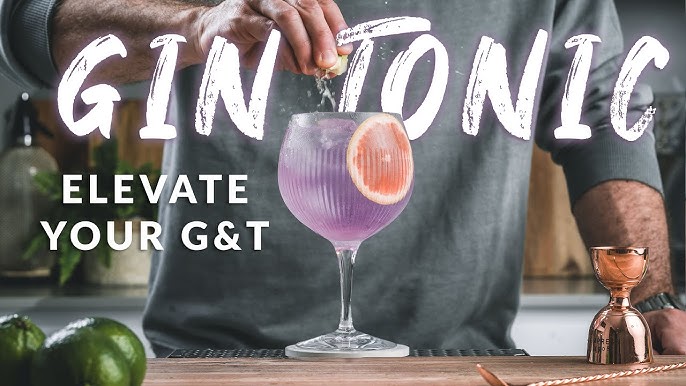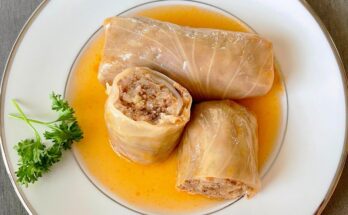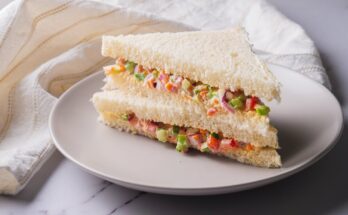Gin and Tonic Recipe: Gin and tonic—two simple ingredients that come together to create one of the most refreshing and beloved cocktails in the world.
Whether you’re a cocktail newbie or an experienced mixologist, mastering the perfect gin and tonic can elevate your home bar game.
Let’s dive into this easy yet elegant recipe with all the tips and tricks you need.
Ingredients for a Classic Gin and Tonic
Core Ingredients
To make a classic gin and tonic, you only need a few essentials:
- Quality Gin: The star of the show. Look for a premium brand with balanced botanicals.
- Tonic Water: Choose a high-quality tonic water with the right amount of fizz and flavor.
- Ice Cubes: Large, clear ice cubes are best—they melt slower and keep your drink chilled longer.
Optional Garnishes
Want to add a touch of flair? Here are some ideas:
- Lime or Lemon: A classic choice for adding a zesty kick.
- Herbs: Fresh rosemary, mint, or thyme can enhance the drink’s aroma.
- Edible Flowers: Perfect for a fancy touch, edible flowers like violets or pansies can make your drink Instagram-worthy.
Essential Tools You’ll Need
Glassware Choices
- Highball Glasses: The traditional choice, offering a sleek and tall shape.
- Balloon Glasses: These have a wider bowl, allowing the aromas of gin to circulate.
Measuring Tools
- A jigger ensures you pour the perfect amount of gin every time.
Other Tools
- Stirring Spoon: For gentle mixing without losing the bubbles.
- Knife and Cutting Board: To slice garnishes like citrus fruits.
Step-by-Step Instructions for Making a Gin and Tonic
Step 1: Prepare the Ingredients
Start by selecting a gin that matches your flavor preferences—whether it’s classic, floral, or spiced. Choose a tonic water that complements the gin without overpowering it. Slice your garnishes and set everything aside.
Step 2: Chill Your Glass
Place your glass in the freezer for a few minutes, or fill it with ice and water to cool it down. A chilled glass ensures your drink stays colder for longer.
Step 3: Add Ice to the Glass
Fill your chilled glass with ice cubes. Use large, clear cubes if possible—they not only look better but also melt slower, keeping your drink less diluted.
Step 4: Pour the Gin
Measure out the gin using a jigger (usually 1.5 ounces) and pour it over the ice. This ensures consistency and prevents over-pouring.
Step 5: Add Tonic Water Slowly
Tilt the glass slightly and pour the tonic water down the side to preserve its bubbles. A 2:1 ratio of tonic to gin is a great starting point, but feel free to adjust to taste.
Step 6: Garnish and Serve
Top your drink with your chosen garnish. Place a lime wedge on the rim, drop in a sprig of rosemary, or scatter a few edible flowers for a splash of color. Serve immediately and enjoy!
Tips for Customizing Your Gin and Tonic
Experimenting with Gins
Different gins offer unique flavors. Try a floral gin for a softer taste or a spiced gin for a warm, earthy kick.
Trying Different Tonic Waters
Flavored tonics like elderflower or Mediterranean can add a whole new dimension to your cocktail.
Unique Garnish Combinations
Think beyond lime! Try grapefruit slices, cucumber ribbons, or a sprinkle of juniper berries.
Common Mistakes to Avoid
- Using Low-Quality Ingredients: Cheap gin or tonic can ruin the balance of flavors.
- Incorrect Gin-to-Tonic Ratio: Too much tonic can overpower the gin. Stick to the recommended ratio and adjust from there.
- Overloading the Garnishes: Keep it simple—too many elements can clash and overwhelm the drink.
The History of Gin and Tonic
The gin and tonic has a fascinating history. Gin originated in the Netherlands, while tonic water, originally medicinal, was used by British soldiers in colonial India to combat malaria. Combining these two created a refreshing and functional drink that remains popular to this day.
Health Benefits of Gin and Tonic (When Consumed Moderately)
Quinine in Tonic Water: This natural compound, originally used for its medicinal benefits, adds a unique bitterness.
Botanicals in Gin: Many gins are infused with juniper, which has antioxidant properties.
FAQs about Gin and Tonic Recipe
1. What ingredients do I need for a classic Gin and Tonic?
A classic Gin and Tonic requires just a few simple ingredients: gin, tonic water, and fresh lime. Optionally, you can add ice and garnish with a lime wedge or cucumber slice to enhance the flavor.
2. How do I choose the right gin for my Gin and Tonic?
The choice of gin can significantly influence the taste of your Gin and Tonic. For a traditional flavor, opt for a London dry gin. If you prefer something with a modern twist, try a craft gin that includes unique botanicals. Experiment to find the one that best suits your palate.
3. What is the best ratio of gin to tonic in a Gin and Tonic?
The ideal gin to tonic ratio varies depending on personal taste, but a common recommendation is a 1:3 ratio, meaning one part gin to three parts tonic. Adjust the ratio based on how strong or mild you prefer your drink.
4. Is there a specific type of tonic water I should use?
Yes, the quality of tonic water matters. Premium tonic waters that are less sweet and more subtly flavored tend to complement the gin without overpowering it. Look for brands that use natural quinine and less sugar.
5. What are some common garnishes for a Gin and Tonic?
While lime is the most traditional garnish, you can also use lemon, cucumber, or herbs like rosemary or mint to add different flavors and aromas to your drink. Garnishes can be a creative way to personalize your Gin and Tonic.
6. How can I make a Gin and Tonic more refreshing?
To make your Gin and Tonic more refreshing, ensure it is well-chilled. Use plenty of ice in the glass to keep the drink cold, and consider chilling your gin and tonic water in the fridge before mixing.
7. Can I make a non-alcoholic version of a Gin and Tonic?
Absolutely! Non-alcoholic gins are available and mimic the flavor profile of traditional gins without the alcohol. Mix it with tonic water as usual and garnish accordingly to enjoy a sober version of this classic cocktail.



